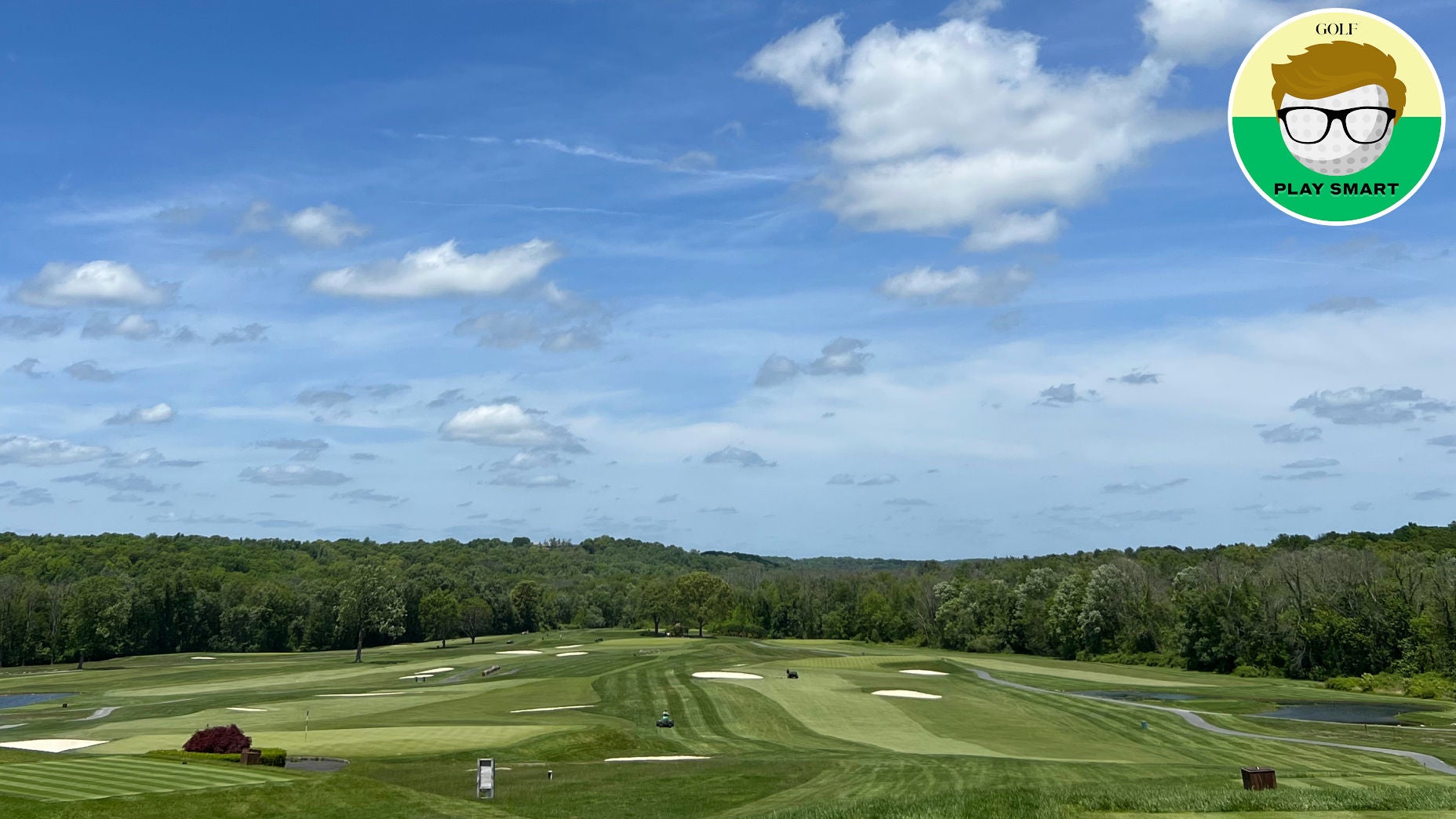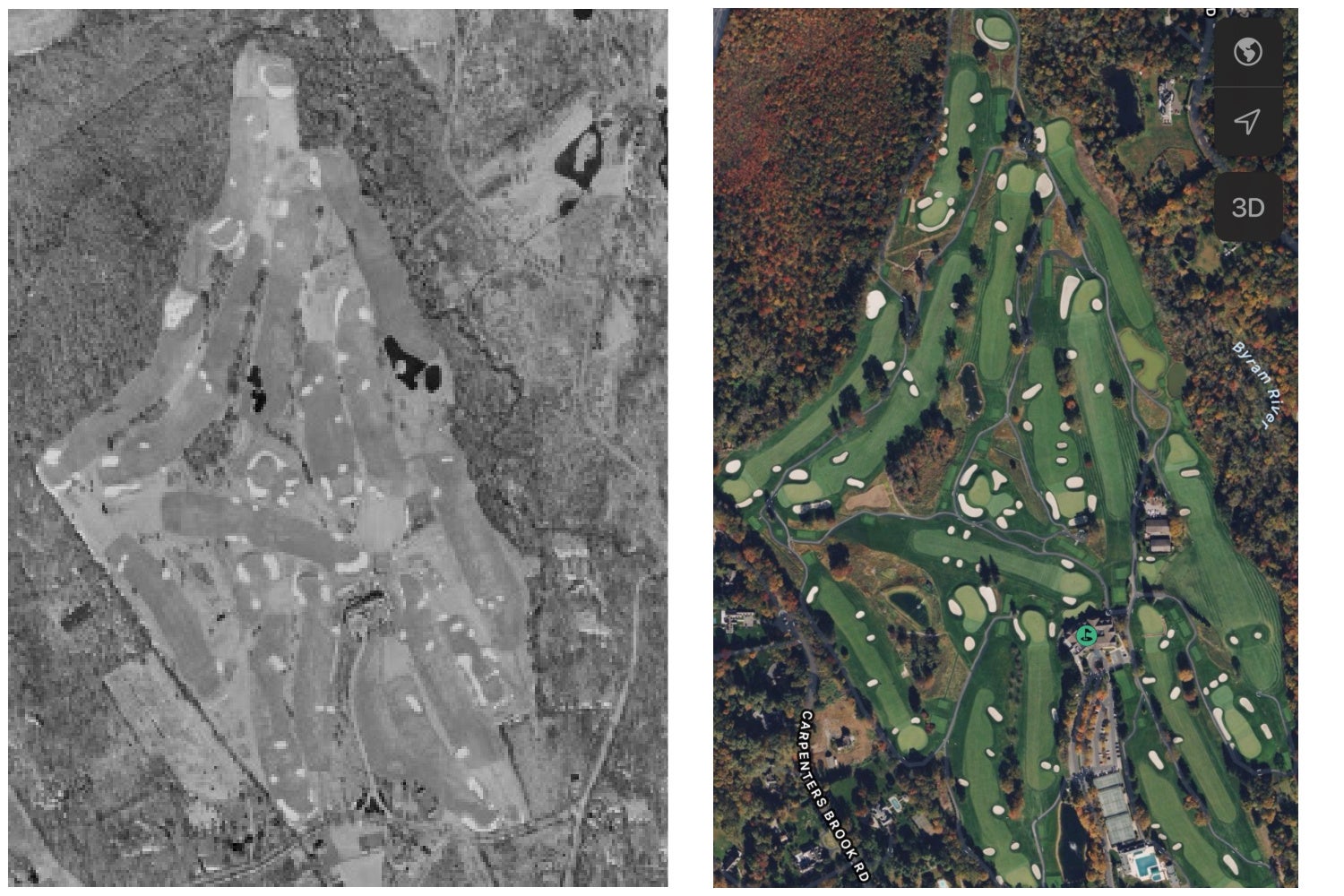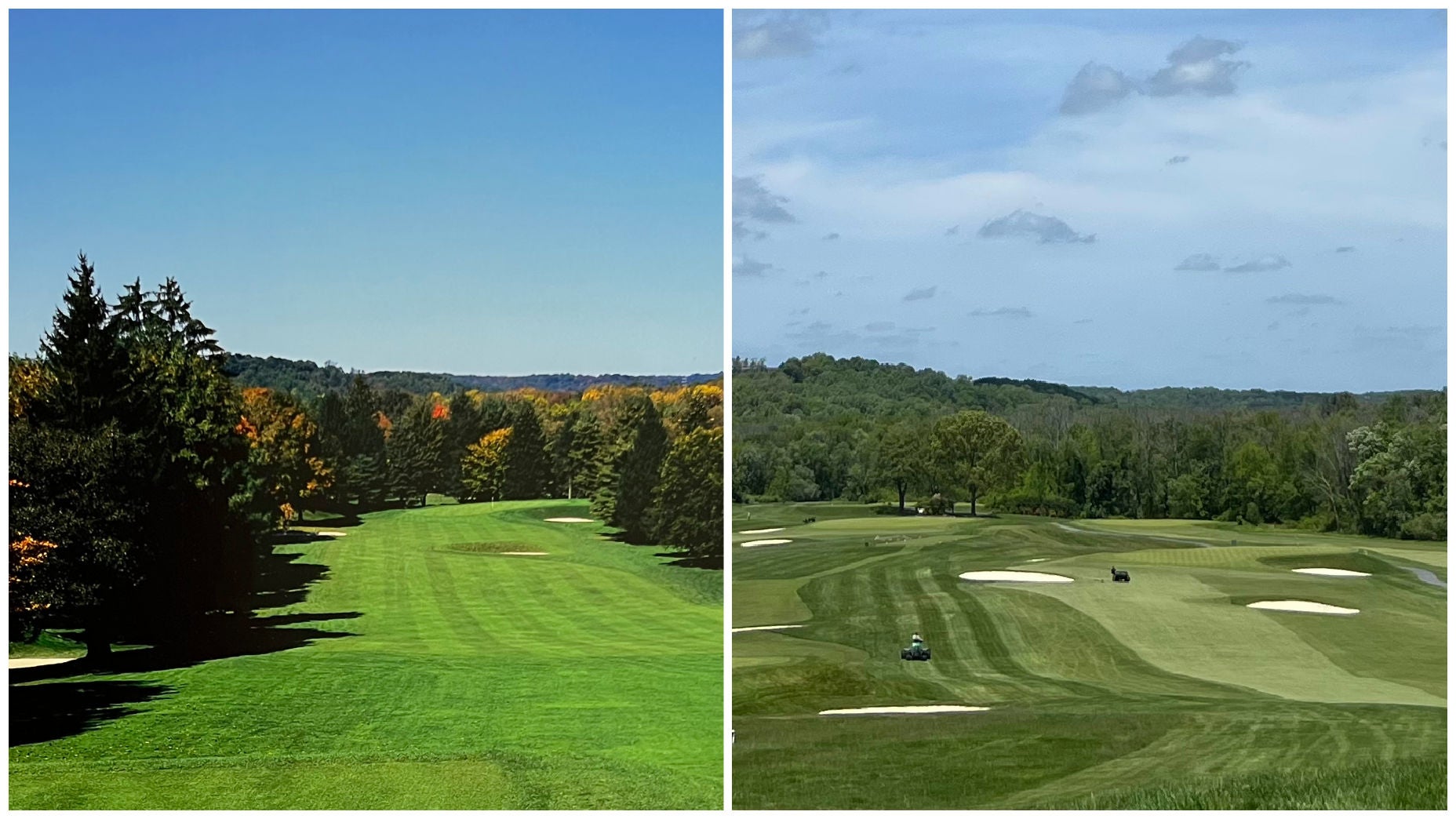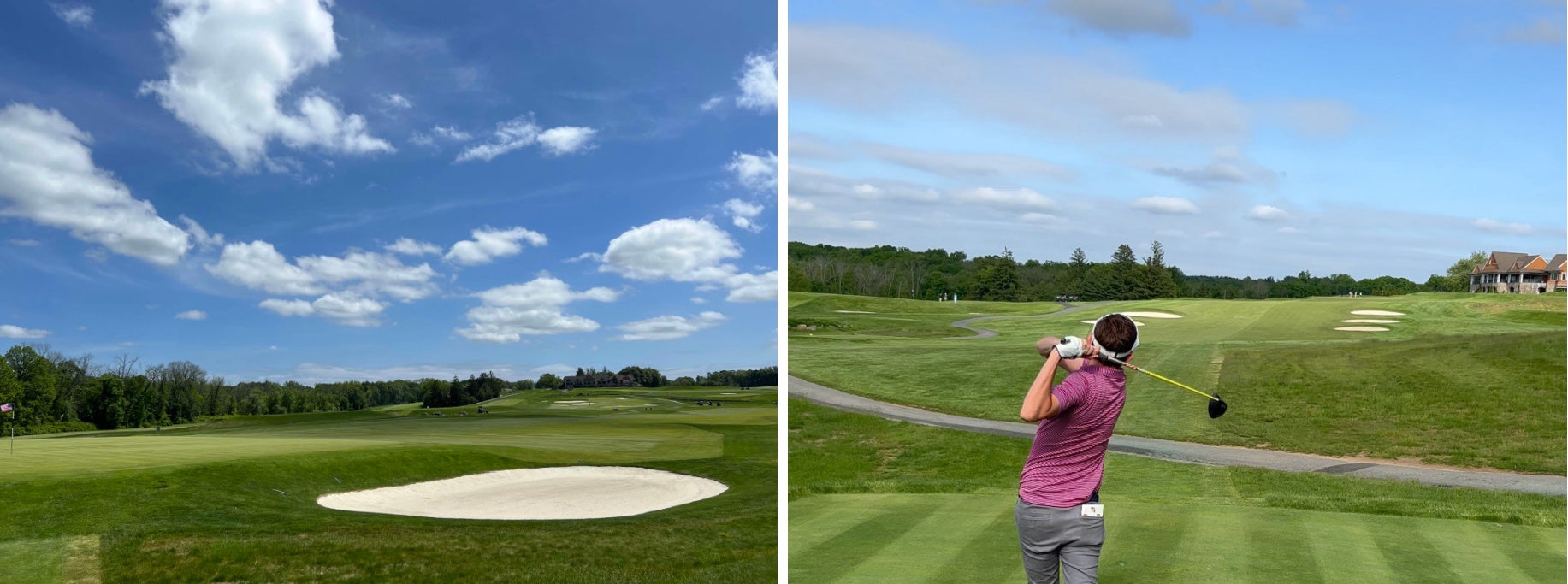
Sixty trees later, Tamarack Country Club restored the intention of its original design.
GOLF.com
Welcome to Play Smart, a game-improvement column that drops every Monday, Wednesday and Friday from Game Improvement Editor Luke Kerr-Dineen (who you can follow on Twitter right here).
My favorite spot at Augusta National is by the big oak tree. Turn your back to the clubhouse, look out, and you can see the entire story of the course: The first half of the 1st and 10th holes, and the second half of 9 and 18. The start of the 8th; the end of the 2nd; bits of the 7th and the 15th. Sometimes even a small peak at the 13th hole, when you catch the light just right.
I was thinking of this recently when I was looking out over Tamarack Country Club’s golf course in Greenwich, Conn., after playing it for the first time since its recent redesign. It was a subtle transformation in scope — they removed about 60 trees flanking a number of its key holes — but in doing so breathed brilliant new life into the already well-regarded course.
Tamarack, ranked fourth in Connecticut in 2020-2021 by GOLF Magazine’s panel of course raters, started the process last offseason. It was a brainchild of Sal Syed, the CEO and co-founder of Arccos Golf who doubles as the head of the course’s greens committee. Syed, with the support of large swarths of the club’s membership, was intent on restoring architect Charles Banks’ original “rolling hills” vision for the course when he was commissioned to create it in 1929.
And, indeed, that’s the form it took when the course opened.

Trees were sparse in 1934, but were scattered throughout the property in 2021.
Google maps
Adding trees to the property was an innovation of golf course architecture in the 1950s, 60s and 70s. Some 50s years later, the trees were presenting a variety of issues and felt out of place. That’s when the club brought in Brian Schneider — whose stout resume with Renaissance Golf Design includes work on acclaimed courses from Kape Kidnappers, to Barnbougle Dunes, to Sebanack — as its consulting architect. His work with the course is ongoing, but his mandate remains a simple one: Restore the original intention of the course’s design.

Three crews downed 60 trees in two days.
And doing that meant downing a selective group of trees.
“There were a mixture of species. Some were unhealthy, most were just in the wrong places,” Schneider says. “So many old clubs began their life as farms or pasture. The intention was for wide open spaces and wide fairways that angle into big greens. So much with Tamarack was about restoring the width, restoring angles, restoring site lines, cleaning up the views and showcasing the beautiful piece of property.”
The board green-lighted the plan, so last winter, course superintendent Jeff Scott and his team got to work. He employed three crews, and in two days, 60 trees were removed. Some of the most striking work came on the first hole. The smattering of trees down the left and right sides gave golfers a corridor to start their round. Removed, golfers now send their drives into a light, airy, open grassland that makes the property feel vast in every direction.

The 1st hole, before and after.
Some of the most striking sightlines opened by the project come from the opposite direction, though. From the farthest northwest corners of the property, golfers can now look back through the course toward the previously obscured clubhouse as its newly defined centerpiece.
The removal project may have only taken a few days, but the effects have been long lasting — and not just visually.
In his first season managing the new layout, superintendent Scott has already noticed the changes. Fewer trees means less shade and more wind, which have improved the overall conditioning of the course.
“For quality turf, you need sunlight and you need airflow. You want stagnant air to move out, especially during the summer when you get those humid days and nights,” he says. “The changes have had immediate, positive impact on our quality of turf, and has helped our ability to dry out the course so it plays firmer and faster.”
And that’s helped the course play differently, too.

The newly opened sightlines back toward the clubhouse.
Syed, the original champion of the project, looks at golf from a unique perspective. In his role at Arccos he’s surrounded by data about how golfers actually play the game. What he saw in the numbers, combined with his love of historic golf course architecture, fueled his passion for the project.
“The best players actually have tighter shot dispersions, and the higher handicaps have wider dispersions,” he says. “So the trees actually penalize the higher handicaps more because they’re hitting recovery shots a whole lot more often than the lower handicap golfers who are hitting more balls into the fairway.”
In removing a select number of trees, Syed says the course isn’t just nodding to its historical roots; it makes the course more enjoyable for every type of golfer.
“Now the ground game is more in play, and the elements are more in play,” he says. “The firmer conditions mean higher handicaps have more run-up options into greens, and the wind is more penalizing for lower handicaps, because their ball is staying in the air for longer and won’t stop quickly near the cup. … It requires more precision.”
The end goal of it all, ultimately, was simple.
“The course is much more fun and enjoyable for the higher handicappers and more challenging for the lower handicappers,” Syed says.
And with a beautifully restored view to admire along the way.










